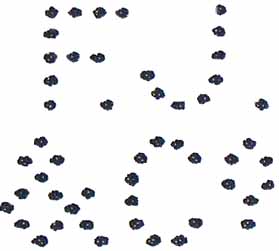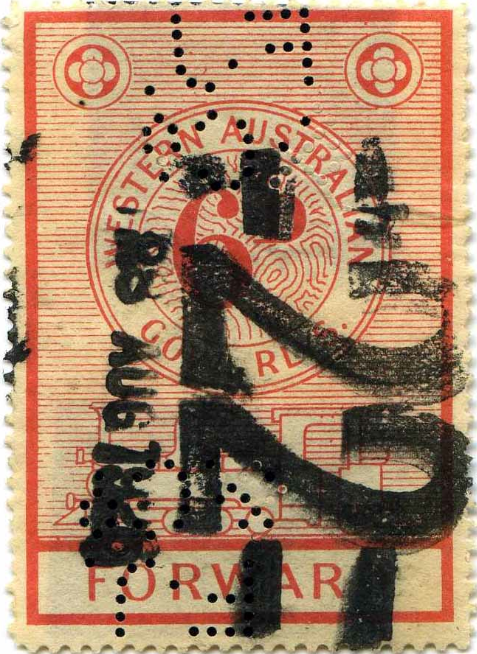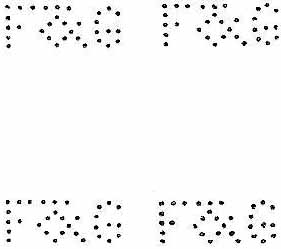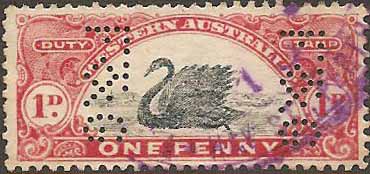|
Private Revenue Perfins of Western Australia An Elsmore Coath production The authors would welcome your comments additions or input into this work B C D F G H I K L M N O P R V W Other F -------------------------------------------------------- F.J./&Co.a User: Foggitt, Jones & Co Meat & Dairy Manufacturers and Wholesalers Address: 80 King St, Perth, WA. Railway Use: 1907-23 issue 6d, 2/-. Rarity Scale: 1907-23 issue 6d R4, 2/- R4. Background: Foggit Jones commenced
trading in about 1904 (In Queensland) and became
manufacturers and distributors of a range of pork
and animal products such as cheese, pate, hams and
other meats from a number of sites in and
around Brisbane. Initially they operated from a
basement location in Adelaide Street as well as
a production site in Oxley (inner Brisbane) and
later at a multi storey factory off Riverside Drive
on the Brisbane River. They later expanded their
distribution and production facilities to Sydney,
Perth (in 1920) and later in the 1920’s in Adelaide.
Foggitt, Jones operation in WA was
known to include a bacon factory in Clayton Rd,
Bellevue and premises in High St, Fremantle. Device: The FJ/CO.a device is most
likely a single head device. It is not found on
the revenue stamps of WA but is found on Railway
stamps. It is also found on the postage stamps of
Australia from 1923 until 1925. Perth postmarks
predominate so it is most likely that the FJ/CO.a
device was located at the Perth office. The strikes of the device over its
short life are sound and the company was known to
have stayed in Perth for decades to come so it is
odd that the usage period was so short. Related Patterns: Refer to other
Foggit Jones patterns in: QLD: FJCO.a -------------------------------------------------------- F&G.a User: Foy & Gibson Ltd Merchants / Department Store Address: 555 – 557 Hay St, Perth, WA. Revenue Use: 1917-22 issue 1d. 1923-25 issue (mono colour) 1d. 1943-57 issue 1d. 1951-63 issue 1d, 3d. 1966-74 issue 3c. Rarity Scale: 1917-22 issue 1d R3. 1923-25 issue (mono colour) 1d R2. 1943-57 issue 1d R3. 1951-63 issue 1d R1, 3d R1. 1966-74 issue 3c R2. Railway Use: 1907-23 issue 3d, 6d, 2/-. Rarity Scale: 1907-23 issue 3d R4, 6d R4, 2/- R4. Background: *Foy and Gibson (sometimes referred to as simply “Foys”) was an early Australian Department store. The company started in 1883 as a partnership in a drapery in the inner Melbourne suburb of Collingwood. The partners were William Gibson, a Scot who had immigrated to Australia in 1882, and Francis Foy, son of Sydney draper Mark Foy. The partnership was dissolved after a disagreement in mid-1884 and William Gibson became the sole proprietor. Through the booming 1880’s Gibson expanded the business taking on new partners in his nephews Samuel Gibson and John Maclellan as well as William Dougal. He increased his overseas buying and range of goods and opened a hardware department and then established a department store modelled on the Parisian Bon Marché. The depression of the 1890’s presented many challenges but the company used the period to establish its own manufacturing facilities for a range of clothing, millinery, furniture, bedding and hardware. In 1902 the company opened a second store in Prahran (Melbourne), and later stores in Perth, Brisbane (1903) and Adelaide (1907). A Melbourne city store was added as well as Regional stores, particularly in WA where it grew to 10 locations. Gibson died in 1918 but the company continued under his nephew John Maclellan. In 1955 the business was acquired by Cox Brothers and in 1964, Foy & Gibson (WA) Ltd, including all of its Western Australian stores were sold to David Jones Ltd., as David Jones (WA) Ltd. Device: The F&G.a device is a four head device in a 2 x 2 format. The dies are very similar but on clear strikes there are subtle differences that should allow you to differentiate between the dies. The 2 x 2 format has spacing that suits the KGV and Kangaroo postal issues as well as the smaller format WA revenues (from 1941) and the device could, if used carefully, provide central strikes of the F&G pattern on these issues. Despite this such strikes are not the norm and you will often find multiple and partial strikes on these smaller issues. On the wider format Swan issues you will sometimes see clear multiple strikes that confirm the spacing between the die heads. Interestingly the spacing between heads 1 and 2 in the first row is slightly wider than the spacing between heads 3 and 4 of the second row. The device was manufactured by Sloper's in January 1911 and came into service that year. The usage on postage stamps is consistent from 1911 until about 1922 when the device seems to have gone out of service. Usage recommences in about 1942 -3 and continues on postage stamps until around 1949, however the device continues to be used on revenue stamps until at least 1966. It is notable that many of the strikes found on issues from the 1940’s onwards are not as clear as the earlier strikes suggesting that the device was not in good working order. Related patterns: Nil * Australian Dictionary of Biography -------------------------------------------------------- B C D F G H I K L M N O P R V W Other © copyright 2011 |



